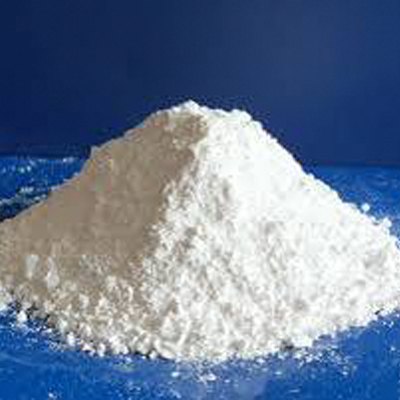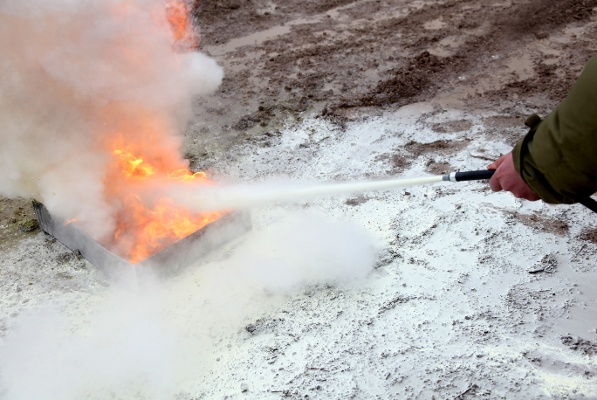WATER
The most used substance in fire extinguishing is water. Water is a substance with cooling, concealing, flowing, mixing and spreading properties.
Cooling feature: In general, if water comes into contact with a burning object, the surface it comes into contact with cools down below the burning point and the fire goes out. It should not be forgotten that water; applying it to the fire as 0.35 mm drops increases the extinguishing quality of water. Therefore, 0.1 to 1 mm with quenching devices. If we use the water in the fire by producing a drop size between fire and water, we can achieve the purpose of extinguishing more quickly.
Coating, Suffocating Feature: To expel the air from the burning area, that is, it leaves the fire without oxygen.
Feature of Use for Emulsion: One of the two liquids that do not mix with each other is dispersed on the other, forming small drops. These drops cover the flammable liquid for a while, stopping the burning and preventing it from spreading. The water to be sprayed in fine drops on the Fuel-Oil stops the burning, which is called Emulsification.
CARBONDIOXIDE (C02)
C02 to be used in fuel and electrical fires is not flammable and does not combine with chemical substances easily. Since it is in gaseous form, it spreads easily over the fire and covers the combustible material. Since carbon dioxide CO2 is a suffocating gas, rising above 9% in the air can cause suffocation and death to 20%. When carbon dioxide is processed in indoor fires, it creates a danger due to this feature. Also; Carbon dioxide does not extinguish reactive (alkali) metal fires such as Sodium, Potassium, Magnesium, Titanium. Because these metals decompose carbon dioxide.
For example, if carbon dioxide is used in sodium fire; C02 + 4 Na2 Na2 0 + C reaction takes place, in which case it is not extinguishing, but as a result of enlarging the fire. For this reason, in electrical fires, it is necessary to cut off the electricity first, and then respond to the fire according to the class of the fire. Chemical reactions
DRY CHEMICAL POWDER

The powders used for B and C class fires are sodium bicarbonate based powders. Dusts used in Class A, B and C fires are composed of Ammonium Phosphate based compounds.
Extinguishing Properties of Dry Chemical Powders: Dry chemical powders extinguish the fire by suffocating, cooling
and interrupting the chain combustion event. Let’s consider these features in order.
The Extinguishing Feature of Dry Chemical Powders by Suffocating Fire: When dry chemical powders are sprayed into the fire, they partially suffocate the flame with the carbon dioxide they emit.
Cooling Properties of Dry Chemical Powders: When dry chemical powders are sprayed into the fire, they absorb some of the heat. For example, when the powder at 18 is sprayed into the fire, one gram rises by 300 C and absorbs 79 calories of heat.
Flame Shielding Feature of Dry Chemical Powders: A blazing fire. The dry chemical powder sprayed on it creates a dust cloud between the flame and the combustible material, protecting the combustible material against the heat from the flame.
The Feature of Dry Chemical Powders to Prevent the “Chain Combustion Event”: In order for the combustion event to continue, some substances released in the burning place must combine with each other and cause reactions.

FOAM (FOAM)
Foam is a chemical compound. When mixed with pressurized water, the mixture mixes with air and creates foam as it passes through the foamer with pressure. Torn; completely covers the fire surface like a blanket, cutting off contact with air.
Features to be sought in foam in general: The foam should be in a hydrolyzed liquid state, the mixture of foam material with water should be between 2% and 10%. The foam formed as a result of the pressurized water mixture should not deteriorate at high temperatures, should not disperse in the wind, should not be affected by dry chemical dust, The (PH) value of the foaming agent (Acidity value) should be 7-8,8, When mixed with water, at least 15 times the foam of the mixture should be formed. It should not lose its feature for at least 10 years. Generally, it should not precipitate between -10 Co and 50 Co.
Usage Areas of Foams: Refineries, chemical laboratories, chemical warehouses, Paint and varnish workshops or warehouses, Fuel storage areas and filling stations Trenches where residual oil is poured, Fuel tankers, tankers, cargo holds, Airports, aircraft hangars,
FIRE EXTINGUISHING FACILITIES
1- Sprinkler system: – Class A Fires
2- Foam extinguishing system: – Especially fuel oil extinguishing foam
3- Dry powder extinguishing system: – Chemistry fab, Nuk. energy. Ist, Refineries etc.
4- Co2 gas extinguishing system: – Gemi mak. offices, Paint booths, Printing machine. etc
5- Halon gas extinguishing system: – Tel.Sant, Electric panels, Computer rooms, Engine compartments of airplanes,
6- Other: – Internal fire hydrants, Fixed water system, – Fire doors



